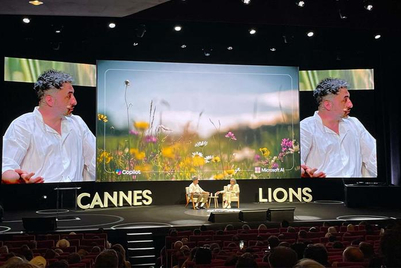
Have we had enough of content marketing? 88 percent of B2B marketers are using it nowadays, and 76 percent say they’ll produce more content this year than last. In other words, we’re being saturated with blogs, infographics and whitepapers that all want to sell us something.
The harder your content tries to generate leads or boost conversions, the more likely it is to fail at doing so. Yet at the same time, content that focuses on audience engagement at the expense of a call-to-action may yield only lacklustre commercial results; even viral videos like Dumb Ways to Die offer no guarantee of quantifiable ROI.
Here are three ways to create content that enables higher sales without turning people off:
1. Create content that’s actually useful
Your content can’t afford to simply have a practical application. It has to also help your customers do something they already want or need to do. This is why investing in customer interviews and sales-team forums is so important—it’s the only way for brands to ascertain what will actually resonate with their audiences.
Often, the best content strategy is to simply create what front-line sellers are dying to include in their next customer conversation. For example, we were approached by one brand to develop a series of how-to videos about their line of consumer handicraft products. After a series of interviews with product managers and retail floor staff, it turned out that the front-line needed something far more interactive and bespoke to address the sheer variety of customer use cases. Instead of videos, we ended up developing an iOS app that could be used in stores to help floor staff deliver customised tutorials, tips, and even advice on product selection for potential customers.
The better you understand your customers, the more useful your content will be to them. Try to go beyond basics like features and functions to decipher the real motivations behind customers’ actions: interview-based methods like Jobs to be Done can deliver starting revelations about what it is customers really base their buying decisions on.
2. If it isn’t useful, it better be powerful
Not all content is inherently useful for customers—particularly when dealing with industries with extremely high levels of complexity or scale. In these cases, it’s even more important for brands to develop content that tells a very powerful story in a very captivating way. News values like timeliness and controversy are especially useful: if a storyline gets people talking, it’s much more likely to drive further engagement with the brand which can lead to actual sales.
The more accessible the content’s storyline is, the more powerful it will usually be. When the CSIRO approached Text100 for sales enablement content around a new wireless technology, we focused not on the technology’s details but on a far more visceral concept: Australia running out of mobile data due to a “spectrum crunch”. That story put our much more technical whitepaper and graphics in national mainstream media around the country—and helped expose the CSIRO’s work to a range of eventual customers and partners. Regardless of whether you’re a B2B or B2C brand, target your content at the most fundamental interests, aspirations, and concerns that everyone has: after all, even top business decision-makers are themselves consumers outside of the office.
3. Sell through the channel, not the content
If you’ve already given your audience something useful or hit them with a powerful message, they’re most likely ready to buy—or at least learn more about your business. The channels you use should make it as easy as possible for them to take that next step.
Don’t just encourage Facebook audiences to ;ike your page: set up a Buy Now button in your posts to drive them to an order form for the product featured in your videos or images. Use an App Card on Twitter to bring users into your own applications for a richer experience. Turn your static whitepaper into a microsite that makes it easy for readers to share on social media, navigate between related sections, and even directly call your customer reps without leaving the page. Your choice of channel should offer intuitive and obvious ways for audience members to do more, or your brand risks losing potential customers after that initial moment of impact.
Successful sales-enablement content treats its audiences not as leads or prospects, but as people. The main goal of any brand’s content strategy shouldn’t be to sell, but to deliver practical insights or powerful narratives (or both) that directly affect audience members on an emotional level. Do so within a channel that makes it as easy as possible to act on that affect, and the sales will come—not as the foundation but as a by-product of great content.


.jpg&h=334&w=500&q=100&v=20250320&c=1)



.png&h=334&w=500&q=100&v=20250320&c=1)



.png&h=334&w=500&q=100&v=20250320&c=1)




.png&h=268&w=401&q=100&v=20250320&c=1)
.png&h=268&w=401&q=100&v=20250320&c=1)

